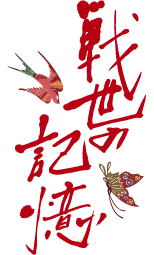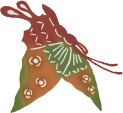
Getting Educated in Taiwan at a Training Center under the (Imperial Army’s) Nakano School
“Getting Educated in Taiwan at a Training Center under the (Imperial Army’s) Nakano School”
Name: Satoshi Nakama (34仲間 慧)
Date of birth: August 22, 1928
Hometown: Miyakojima Island
At the time: 17 years old or older
■ Encountering an Air Raid by US Forces (October 10, 1944)
Upon receiving instructions to “make preparations for departure on October 7,” I went to Naha Port. There were 30 wooden coal-transporting ships with a displacement of 30 tons to 50 tons all lined up. I went aboard one of those ships and departed Naha Port around 3 o’clock in the morning of October 10. The ship on which the fleet chief was aboard had departed as the advance party. The advance party was already heading toward the Kerama Islands. As I was gazing at the sky from the deck around 4 a.m., I saw fire burning in the direction where Naka Airfield was located at that time (at Kadena). I thought, “That’s strange.” As dawn approached, I now saw what looked like a large bird soaring in the sky. I did not think that that bird was an enemy plane. As I looked toward the front of the fleet, I saw flames all the way from the direction of Kerama where the ship at the forefront was located to where we were. Soon, there was an uproar, with people shouting, “Enemy planes are here!” Two ships in front of us and one alongside us were hit by torpedoes fired by the US forces and completely annihilated. Falling into turmoil, we decided that we “must lower boats from the ship and flee.” Since there were lifeboats aboard the ship, the seven of us students got on the life boats and started rowing toward the shore. Just then, a Grumman fighter, an American aircraft, came nose-diving directly at our boat and fired its machine guns at us. An oar broke apparently hit by a bullet. The bullet swiped my forehead and hit the oar. I did not feel any pain, but I did feel some heat. The students around me said: “Your head is bloody all over.” Therefore, I touched my forehead and realized that there was blood tattered on my forehead. Since we could no longer use the oar because it was broken, the three of us swam and pulled the boat.
■ December 25, 1944
On December 25, when we entered the air raid shelter, we were notified that “Okinawa Industrial High School will be holding a graduation ceremony.” The graduation ceremony was held with 15 to 16 people attending. After the graduation ceremony, a teacher in charge of the building structure class summoned me, saying, “Mr. Nakama, come over here.” He said: “You never know what will happen to people, so just in case, you should be prepared so that you can transfer to any school. I will prepare a transfer certificate, so come and pick it up at the school office.” We went to the office together. The teacher said” Keep it with you all the time. Take it with you, taking absolutely good care of it.” I took this certificate and fled to Taiwan.
■ Becoming a Conscription Officer at the Regiment Headquarters in Taiwan, Preparing Draft Notices
When I took the transfer certificate to Taichung Industrial High School, they accepted me without any problems. The most unusual thing happened five days after I entered the school dormitory. A military police officer from the Regiment Headquarters in Taichung came to see me. He said: “You say you fled here after suffering war damage in Okinawa, but you must never mention anything about the situation there (Okinawa).” The MP told me at the principal’s office to keep my mouth shut. Although I was able to take classes without any problems, they were organizing students’ corps in schools Taiwan just like in Okinawa. There was a lieutenant from Kagoshima who recommended me to a job at the headquarters. I was appointed as a conscription officer who prepares “red papers” (draft notices). My job was to create a roster (of draftees) from a name list at the government office, and send out red papers (draft notices) to the people concerned.
■ Going to Takushi Dojo (Training Hall), a Training Center under the Imperial Japanese Army Nakano School
In May 1937, I was relocated to Takushi Dojo. My job was to infiltrate Taiwanese villages and supposedly collect intelligence regarding whether the villagers had any anti-Japanese sentiments. We would have three or four people form a team, enter a village separately, and do such things as information collection. Most of the local people spoke Japanese, so we managed to get mutually friendly and were sometimes able to gather information from them. At the dojo, there were some water buffaloes, cattle, and horses. These animals were used to camouflage the dojo to make it look like a farm. Therefore, I did not know whether the staff at the dojo were using their real names or pseudonyms.
■ End of the War
I heard the Gyokuon-Hoso (Jewel Voice Broadcast, i.e. the radio broadcast in which Japanese Emperor Hirohito read out the Imperial Rescript on the Termination of the War), but I think it was on August 14, not August 15. The 15th is a mistake; it was on August 14 that (Japan) accepted the Potsdam Declaration. The Regiment Headquarters voluntarily collected all weapons, and disbanded on the spot. At that time, there was talk about “never mentioning the existence of Takushi Dojo, no matter what.”
Name: Satoshi Nakama (34仲間 慧)
Date of birth: August 22, 1928
Hometown: Miyakojima Island
At the time: 17 years old or older
■ Encountering an Air Raid by US Forces (October 10, 1944)
Upon receiving instructions to “make preparations for departure on October 7,” I went to Naha Port. There were 30 wooden coal-transporting ships with a displacement of 30 tons to 50 tons all lined up. I went aboard one of those ships and departed Naha Port around 3 o’clock in the morning of October 10. The ship on which the fleet chief was aboard had departed as the advance party. The advance party was already heading toward the Kerama Islands. As I was gazing at the sky from the deck around 4 a.m., I saw fire burning in the direction where Naka Airfield was located at that time (at Kadena). I thought, “That’s strange.” As dawn approached, I now saw what looked like a large bird soaring in the sky. I did not think that that bird was an enemy plane. As I looked toward the front of the fleet, I saw flames all the way from the direction of Kerama where the ship at the forefront was located to where we were. Soon, there was an uproar, with people shouting, “Enemy planes are here!” Two ships in front of us and one alongside us were hit by torpedoes fired by the US forces and completely annihilated. Falling into turmoil, we decided that we “must lower boats from the ship and flee.” Since there were lifeboats aboard the ship, the seven of us students got on the life boats and started rowing toward the shore. Just then, a Grumman fighter, an American aircraft, came nose-diving directly at our boat and fired its machine guns at us. An oar broke apparently hit by a bullet. The bullet swiped my forehead and hit the oar. I did not feel any pain, but I did feel some heat. The students around me said: “Your head is bloody all over.” Therefore, I touched my forehead and realized that there was blood tattered on my forehead. Since we could no longer use the oar because it was broken, the three of us swam and pulled the boat.
■ December 25, 1944
On December 25, when we entered the air raid shelter, we were notified that “Okinawa Industrial High School will be holding a graduation ceremony.” The graduation ceremony was held with 15 to 16 people attending. After the graduation ceremony, a teacher in charge of the building structure class summoned me, saying, “Mr. Nakama, come over here.” He said: “You never know what will happen to people, so just in case, you should be prepared so that you can transfer to any school. I will prepare a transfer certificate, so come and pick it up at the school office.” We went to the office together. The teacher said” Keep it with you all the time. Take it with you, taking absolutely good care of it.” I took this certificate and fled to Taiwan.
■ Becoming a Conscription Officer at the Regiment Headquarters in Taiwan, Preparing Draft Notices
When I took the transfer certificate to Taichung Industrial High School, they accepted me without any problems. The most unusual thing happened five days after I entered the school dormitory. A military police officer from the Regiment Headquarters in Taichung came to see me. He said: “You say you fled here after suffering war damage in Okinawa, but you must never mention anything about the situation there (Okinawa).” The MP told me at the principal’s office to keep my mouth shut. Although I was able to take classes without any problems, they were organizing students’ corps in schools Taiwan just like in Okinawa. There was a lieutenant from Kagoshima who recommended me to a job at the headquarters. I was appointed as a conscription officer who prepares “red papers” (draft notices). My job was to create a roster (of draftees) from a name list at the government office, and send out red papers (draft notices) to the people concerned.
■ Going to Takushi Dojo (Training Hall), a Training Center under the Imperial Japanese Army Nakano School
In May 1937, I was relocated to Takushi Dojo. My job was to infiltrate Taiwanese villages and supposedly collect intelligence regarding whether the villagers had any anti-Japanese sentiments. We would have three or four people form a team, enter a village separately, and do such things as information collection. Most of the local people spoke Japanese, so we managed to get mutually friendly and were sometimes able to gather information from them. At the dojo, there were some water buffaloes, cattle, and horses. These animals were used to camouflage the dojo to make it look like a farm. Therefore, I did not know whether the staff at the dojo were using their real names or pseudonyms.
■ End of the War
I heard the Gyokuon-Hoso (Jewel Voice Broadcast, i.e. the radio broadcast in which Japanese Emperor Hirohito read out the Imperial Rescript on the Termination of the War), but I think it was on August 14, not August 15. The 15th is a mistake; it was on August 14 that (Japan) accepted the Potsdam Declaration. The Regiment Headquarters voluntarily collected all weapons, and disbanded on the spot. At that time, there was talk about “never mentioning the existence of Takushi Dojo, no matter what.”


